Transitioning to Cow's Milk: How Do I Do This?
In this episode, we’re talking about transitioning to cow’s milk from breastmilk or formula at 1 year. Do you have to do dairy? Do you need to titrate the milk? What if you still want to breastfeed? We’ll cover all of that and more in this episode!
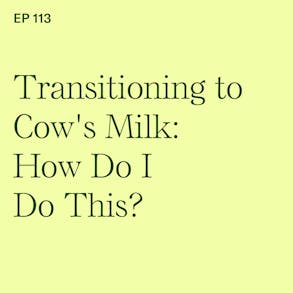
LISTEN TO THIS EPISODE
Episode Description
How do I transition to cow's milk from breastmilk or formula? What age do I make the switch? What are the nutritional benefits of cow's milk?
In this episode, I'll walk you through the transition (hint: it's not for the beginners!) to cow's milk IF that's what is right for your family. I also cover cow's milk as an allergenic food and how the introduction is different from fluid cow's milk. Lastly, I touch on how milk might be affecting your toddler's hunger during mealtime. Happy listening!
Links from this Episode
- Episode 79 - How to Pick a Milk When Your Baby Turns 1
- Episode 55 - How to drop a milk feed
- Baby-Led Weaning with Katie Ferraro program with the 100 First Foods™ Daily Meal Plan, join here: https://babyledweaning.co/program
- Baby-Led Weaning for Beginners free online workshop with 100 First Foods™ list to all attendees, register here: https://babyledweaning.co/baby-led-weaning-for-beginners

Latest Episodes
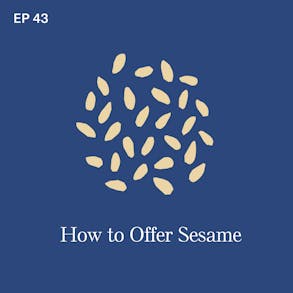
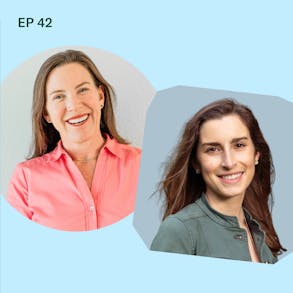
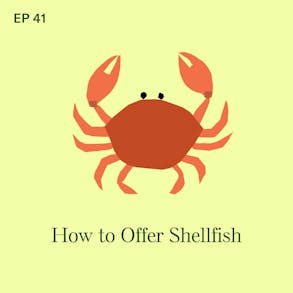
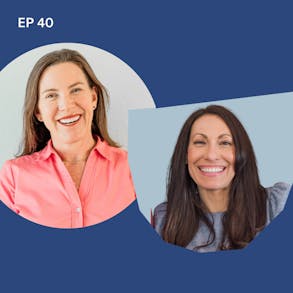
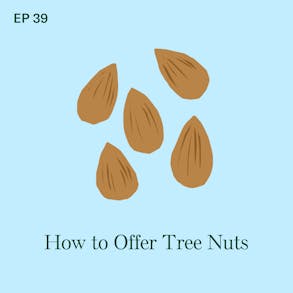
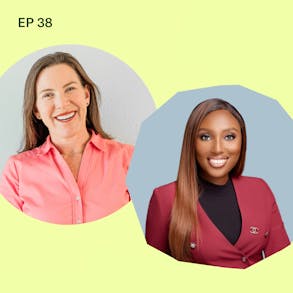
Katie Ferraro (0s):
And there's no need to drag this transition out, like all parents with really elaborate plans and like titrate down the formula and slowly increase cow's milk. You don't have to make such a big deal out of it. There's actually a really easy way to transition from breast milk or formula to cow's milk when your baby turns one. Hey, there I'm Katie Ferraro, registered dietician, college nutrition, professor and mam of seven specializing in baby-led weaning here on the Baby-Led Weaning Made Easy podcast. I help you strip out all of the noise and nonsense about feeding, leaving you with the competence and knowledge. You need to give your baby a safe start to solid foods using baby-led weaning. Hey guys, welcome back.
Katie Ferraro (43s):
Talking today about how to transition to cow's milk. Like how do I do this? I know it can be stressful for parents as they approach the one year mark. Like a lot of stuff is changing and just not sure exactly what it looks like. So that's the point of this episode. This is not for like the just starting baby led weaning crowd. This is info for when your baby is approaching the one year mark and you're ready to wean off of formula or breast milk. And you're wondering like, how do I get my baby on to cow's milk? Like, do I do cold turkey? Is it like a slow burn? What's the deal? So I'm going to share what works for me. What works for me and works from the families I've worked with might not work for you, but it's just some ideas about how you might do this. You might not be going to cow's milk. If your baby is allergic to milk, for example, or your vegan family, and you don't eat animal foods, including milk, then you wouldn't be making this transition to cows milk, but there might actually be some information about volume of milk and milk alternatives.
Katie Ferraro (1m 33s):
That will be helpful to you. But I do want to mention that I have a whole separate episode about how to pick a milk when your baby turns one that's podcast, episode number 79. If you want to go listen to that today, I'm going to be talking about the actual transition that happens at the one year mark. All right. So let's talk about when we transitioned to milk, I mentioned 12 months of age, but it is okay, just so you know, to do milk foods like yogurt and cheese and milk it as an ingredient and other foods at six months of age, when you start solid foods, but we just don't do fluid cows milk in place of breast milk or formula until baby turns one, it's not nutritionally adequate, right? But like, it's fine for your baby. We want your baby to be trying cow's milk protein early and often as a way to help prevent cow's milk protein allergy just don't do the fluid milk until 12 months.
Katie Ferraro (2m 17s):
So this transition will take place at around the 12 month mark. It's like actually on their birthday. Like I got a lot of other stuff going on when my baby turns one that that day, but like that week I will make the transition to cow's milk. And then so next up is what if you got wind down, we do this at 12 months. What is it that we're feeding? If you do drink, cow's milk in your family for your baby, you're going to want to be buying whole milk. We do whole milk until age two, and then we do 1% or non-fat milk after age two, whole milk is sometimes called vitamin D milk. It's a little misleading because all milk in the United States at least is four to five with the same amount of vitamin D. If it's nonfat or 1% of reduced fat or whole milk. So sometimes you see vitamin D milk, but basically if it's not reduced fat and it's not, not fat, it's not low fat, then it's whole milk.
Katie Ferraro (2m 58s):
Now, why do we want to cows milk prism parents like, oh, but milk is a good thing, right? Like it's got lots of nutrition. Yes, but it's not a totally perfect food. And a child can not live on milk alone. Okay. Milk is beneficial because there's vitamin a, in it vitamin D in it, there's calcium, there's protein in it. And there not a lot of other ways to get at least vitamin D in the diet, then four to five dairy foods. But I do want you to know if you don't do cows milk at all, like there are lots of kids out there who are just fine and don't drink cow's milk. If you do drink cow's milk though. It is beneficial because it has calcium and vitamin D we can work on other ways to get it. If you don't. And I do just want to point out that milk is problematic in children because it doesn't have iron in it. And you might be like, well, there's lots of other foods that don't have iron in it, but here's the deal with milk.
Katie Ferraro (3m 41s):
I would say the number one thing that sabotages toddler nutrition, when toddlers don't eat as much as their parents wish they would, it tends to be tied to the amount of milk that they're drinking parents think but milk is a good thing. I'm just going to let them drink it like Willy nilly. No, no, no, no, no milk is not a free food. We should be very conscientious about how much milk we're giving kids, because it doesn't have iron. And if it fills your baby's belly up and then they're not eating other nutritious foods that have iron in them because they're full of milk. That's not a good thing either. So we're going to talk about how much milk to feed as well. Okay. This one is important at 12 to 24 months of age, the American Academy of Pediatrics says to feed your baby 16 to 24 ounces a day.
Katie Ferraro (4m 21s):
Now those of you that formula feed, like you think in terms of ounces, if you're breastfeeding, you're not maybe know how many ounces you're feeding in a day, but you do want to pay attention to ounces when you're around that, one-year mark to make sure you're not getting too much. A lot of parents like, oh my God, I'm worried my baby's not going to be getting enough. I even do a tighter range. I find that babies or toddlers in the one year age one to two, do better with 16 to 20 ounces of milk. So I'll try to keep it in there. And many babies can drink less than 16 ounces of milk and still be fine. Parents worry about dehydration. However, baby can also get fluid from water at the one-year mark. And there's also a lot of water in the foods that your baby is eating. So don't worry that if you're not drinking the full 16 to 24 ounces, that your baby would be dehydrated.
Katie Ferraro (5m 4s):
You're at much higher risk. If you're like the general population of having your kid drink too much milk. So how do you actually make that transition? And what does it look like? I am an advocate for skipping the sippy cup. So go right from the breast or bottle to the open cup. There's many, many reasons why we want to skip the sippy cup. If you want to listen to the whole interview with it, I got six reasons to skip the sippy cup. I did that with Dawn Winkelman, who is a speech language pathologist. She also designed the open cup that I use for baby led weaning called the tiny cup. And that is a two ounce cup. That's great for babies, six to 12 months of age. So my last two babies Gus and Hannah. They're my sixth and seventh babies. And I did my a hundred first foods approach with them. And the tiny cup came out right when they were doing baby led weaning.
Katie Ferraro (5m 44s):
So I actually did. I never recommend anything. I haven't done either with my own children or with the families that I work with for baby-led weaning, but to skip the sippy cup, I didn't think it was possible, but babies can definitely learn how to drink out of an open cup. And that tiny cup came out right when we were doing baby led, weaning Gustin, Hannah learned how to drink out of an open cup. We started around eight months of age. You can start around six, but I never get my act together to do anything till a little bit later, eight months of age, five minutes after each meal, we practiced with the open cup. By the age of one, they hit the feeding milestone, which is your baby should be able to drink out of an open cup with minimal spillage by themselves. There will be some spillage. That's fine, but they should be able to do it by them on their first birthday. They don't magically wake up and know how to do that. On their first birthday, you have to practice. That's the point of the weening period.
Katie Ferraro (6m 24s):
So do five minutes with the open cup after each meal. So parents say, well, gosh, my baby is not as good as drinking out the open cup. They will drink less milk and they will get more proficient at drinking out of the open cup. The more you practice, we don't want them to be drinking a lot of milk, right? They get suck a lot of cows milk out of a sippy cup. That's not the point we want to keep the milk under control. So again, I like 16 to 20 ounce as your goal at the one-year mark. Now, do you just like all of a sudden, give them a 20 ounce cup and be like, here, drink this. No, I practice with that two ounce cup, that tiny cup from easy peasy, fill up three quarters of the way up. That's one and a half ounces as they get near the one-year mark starting about nine months of age. I will start giving them after meals one and a half bounces of formula or breast milk out of the open cup.
Katie Ferraro (7m 5s):
Because again, no fluid cows milk in place, a form, your breast milk until they turn one. But at nine, eight, nine months, we'll start practicing. Take that two ounce cup, fill it up with one and a half to two ounces of breast milk or formula. And I do that two times after each meal. So it's three ounces after breakfast, three ounces after lunch, three ounces after dinner, you can't feel like the two ounce cup all the way up. We'll definitely spill it. So again, fill three quarters of the way up twice. We do this in the five minutes after each meal with practice, they will get more proficient at it. So they're drinking nine ounces out of the open cup. By the time we get to the one-year mark and I always keep the night bottle. The last thing I will give up is that night bottle. Now the goal is to have your baby off of the bottle by some sources, say the 12 month mark in real life. I never get around to it until 15 months, but like by 15 months of age, a baby should be off the bottle, right?
Katie Ferraro (7m 47s):
For all sorts of speech and developmental reasons. We want them drinking that open cup. I will do a six to eight ounce bottle before bed. If that's working for my schedule as we go up to the one-year mark. Now, when they one is that bottle still formula. Heck no, I don't want to keep paying for four. Is it breast milk? If you want to keep feeding breast milk, if you want to keep breastfeeding, you and your baby passed the one-year mark, of course, please feel free to do that. But your baby should be learning how to drink out of an open cup. So when we're at the one-year mark and we're trying to make sure baby's getting no more formula and trying to wean off of breast milk, if that's the goal and we're doing cows milk, what I will do is I'll do a 50-50 ratio. I don't go cold turkey to all cows milk. And if your baby's been on infant formula, just so you know that the base of it, the protein is exactly the same as in cow's milk.
Katie Ferraro (8m 31s):
Like it is basically cows milk with some modifications. So like you don't have to be super, super careful about transitioning from formula to cow's milk. Cause it's actually the same thing. If your baby was exclusively breastfeeding, you only did breast milk and no formula. Yes. You were dairy foods as you were doing baby led weaning. So they got some cows milk, protein exposure there, but the is a little bit rougher there to go from breast milk to cows milk. You have to do it. It's not the end of the world. The diapers might be a little bit funky for a couple of days, but I'll generally do half half. So like let's say before bed, I'm still at the one-year mark giving my baby a six or an eight ounce bottle. I'm going to be trying to get off the bottle in the next week or two or a month or two. But if we're still doing the bottle, I'll do half cow's milk at one year and half formula. And I'll do that until I run out of formula.
Katie Ferraro (9m 12s):
So my goal is like, I'm not gonna buy any more formula. I'm going to go half, half. And then when that formula is gone or when that breast milk that was frozen has gone, where I've decided on breastfeeding a few days, maybe a week later, it runs out, okay, then I'll go a hundred percent cows milk, but you don't need to drag it out. Some parents like I'm going to spend the next six months slowly, tapering down the formula and increasing the cows. You do not need to do that. You can make this transition in about a week. Again, might be a little changes in the diaper, a little bit rough on the gut for the baby, but it's a kind of quicker way to get them to that goal, which is all right. We want them on cows milk by the time they're one-year. If your family drinks cow's milk, what do you need to watch out for? Don't be worried about dehydration. If you're practicing with the open cup, your baby will start getting more proficient at drinking out of the open cup.
Katie Ferraro (9m 55s):
They will drink less as you get to the one-year mark. But that's the point right of weenie is that they're starting to get more nutrition from food and less nutrition from milk. I do want to remind you that there are many babies out there that do perfectly fine without any cow's milk. You don't need to drink cow's milk. But if your toddler at one-year-old does drink cow's milk. Please keep an eye on how much they're drinking. I'm a firm believer that milk should be offered at meals or right after meals. Personally, I found that my children get distracted. If the milk is there at the, at the meal. So we'll put the cup after the meal that might work for you. It might not, but we don't want your child walking around with a sippy cup full of milk. All that does is... First of all, it's gross. When you find sippy cups full of spoiled milk all over your house, babies don't need the sippy cup, right?
Katie Ferraro (10m 35s):
From a developmental standpoint, they encourage over consumption of milk. And we actually want to limit the amount of cows milk somewhere between 16 to 24. Again, I do 16 to 20 ounces that works better. In my experience for helping children then feel enough hunger at meal times so that they actually want to eat the food that you're offering so that they're not totally full of milk. So hope that helped the transition to cows milk. Let me know how it's going for you. You don't really have to worry about this until the one-year mark, but when you do, you don't have to make a big deal about it, make that transition. And one other thing parents ask about, should I be heating the milk? Here's the deal. If you heat the formula, what I slowly do is I get close to the one-year mark is I stopped eating it.
Katie Ferraro (11m 15s):
If the goal is to get the baby to drink milk at one out of the refrigerator, which is where we store cow's milk, then I'll start doing colder or room temperature formula as well. I don't want to get into a situation where I'm like heating up cows milk for a one and a half year old. So I do room temperature formula. I stop eating bottles. As I get closer to the one-year mark, your baby will there's. Yes. It's different. As they learn to drink cow's milk. It tastes different. There's a little bit of a different consistency than the formula or breast milk they're used to, but they can definitely drink cold or room temperature, milk. You just don't want to let it out like sitting at room temperature for long periods of time, because of course it could be a potentially hazardous food and it could cause foodborne illness. If you're drinking like milk, that has not been refrigerated for too long. All right. So there you have it real quick transition to cow's milk.
Katie Ferraro (11m 56s):
How do I do this? I'll link up some of the other episodes that I talked about that might help you learn more about moving to cows milk. I'll do that on the show notes for this episode, which you can find at blwpodcast.com/113.
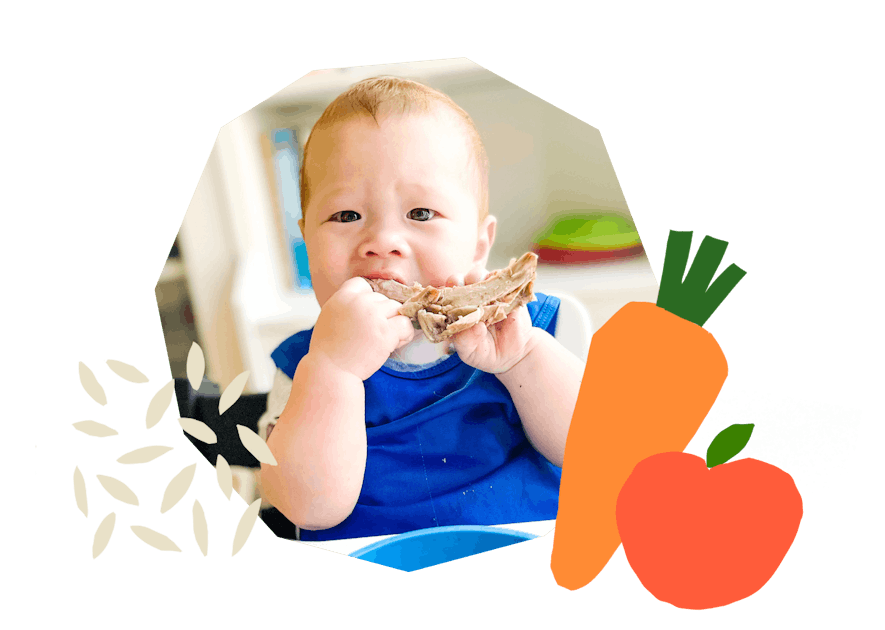
The Program Baby-Led Weaning with Katie Ferraro
A step-by-step digital program for starting solid foods safely and navigating the original 100 FIRST FOODS™ meal plan with baby-led weaning.
 EXPERT-LED, PROVEN APPROACH TO EATING REAL FOOD
EXPERT-LED, PROVEN APPROACH TO EATING REAL FOOD CONCISE VIDEO TRAININGS TO MASTER BABY-LED WEANING
CONCISE VIDEO TRAININGS TO MASTER BABY-LED WEANING 100 FIRST FOODS DAILY MEAL PLAN WITH FOOD PREP VIDEOS
100 FIRST FOODS DAILY MEAL PLAN WITH FOOD PREP VIDEOS
Baby-Led Weaning for Beginners Free Workshop
Is your baby ready to start solid foods, but you’re not sure where to start? Get ready to give your baby a solid foundation to a lifetime of loving real food…even if you’re feeling overwhelmed or confused about this next stage of infant feeding.
Get baby-led weaning recipes and tips delivered to your email inbox.

